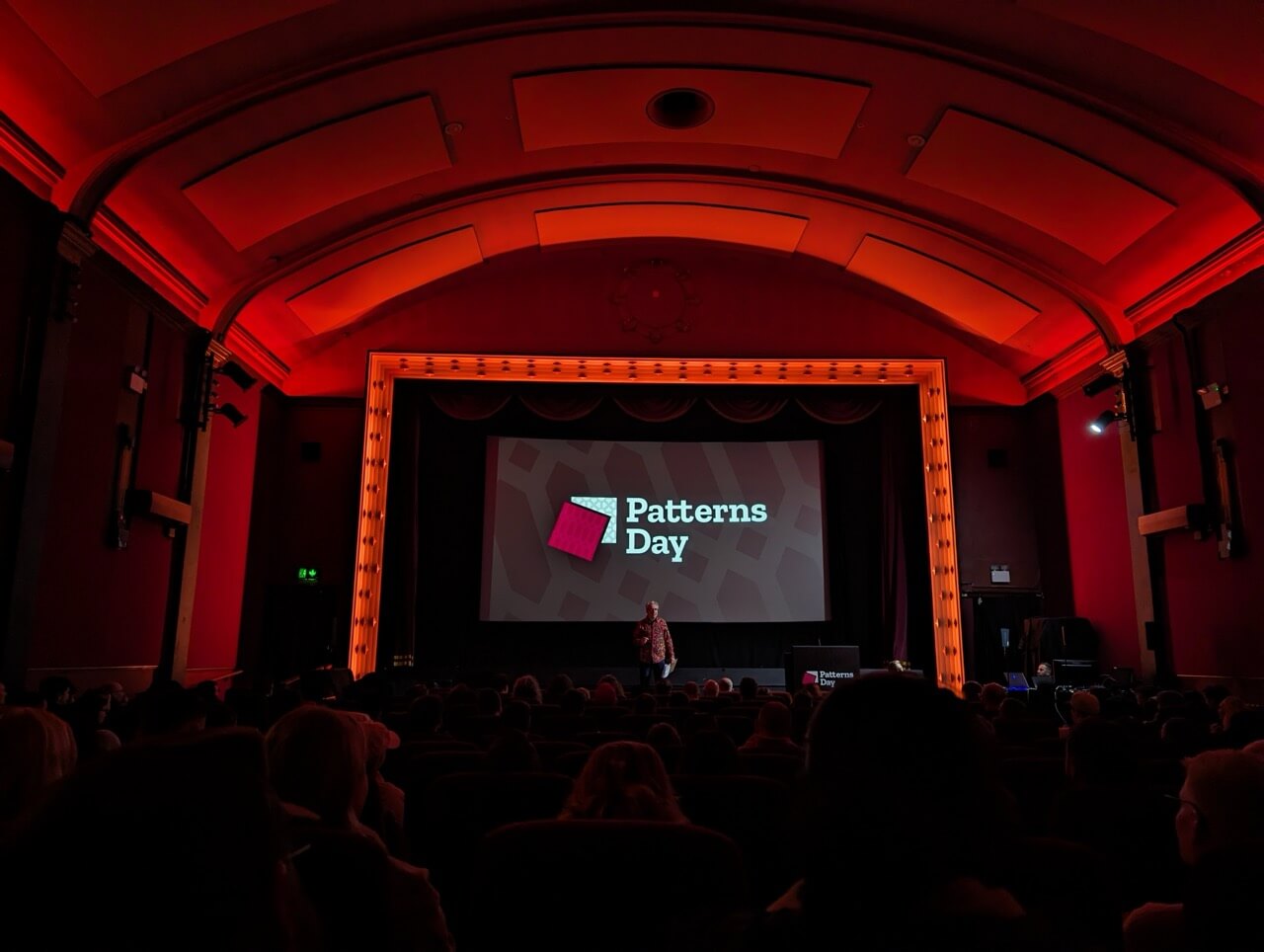Patterns Day Patterns
Posted on in WebPatterns Day 2024 was a fantastic celebration of all things Design System, held in the timeless Duke of York’s Picturehouse in Brighton. I was fortunate enough to attend with several hats; as a Motorway design system contributor, as an ex-Clearleftie, and as a Utopia co-founder, and it was great to hang out with so many people in the design system space.

I tried to take notes during the day, tricky though that was in an extremely dark cinema. Jeremy did a top job of combining big picture and nitty-gritty talks into the packed schedule. Despite the range of talk scope, there were a couple of common patterns that emerged during the conference.
Education
Design systems are for people. And the big problems in design systems aren’t code or design challenges, they’re ones of communication. There’s still a real need for better education around design systems: how to best consume them, how to extend them, how to articulate their position in a business. Adoption is still a huge challenge in 2024.
Geri & Vitaly showcased how accessibility & user experience issues still exist pervasively in our design-system driven worlds. Yes, we need to build great foundations, but it’s essential we educate those consuming our systems to ensure they’re building accessible products with them.
Space to continue
In a world where the squeaky wheel gets the grease, it’s draining to constantly have to justify your role, particularly when you work on a stable design system. But the more impact we can measure, the more space we’re given to continue.
There’s never enough time or resources; we have to be smart
Choosing your moments is important. We can look at team’s roadmaps to determine the right time to take on larger pieces of design system work, attaching the effort to existing BAU work. Samantha & Yolijn gave great tips around how we effectively navigate these challenges.
AI has entered the chat
Jina Anne proposed an approach of “intelligent personalisation” when we look to interface with generative AI. We should always be looking to harness AI for our users, not to replace us. We’ve only scratched the surface of how we interface with AI. A text box is not the best solution, even if it’s the easiest way to bolt a GPT to your product. We can do better than that.
Tokens, tokens, tokens
Tooling continues to flourish around design tokens, and although it involves a fair bit of plumbing, it moves the source of truth for these foundations back into the designer’s hands. Debora & Mary both broke down how they’re integrating tokens into their respective products.
Rich spoke about fluid typography and space, a subject very close to my heart, and showed how accepting the fluidity of the medium of the web at the foundation of our design systems actually provides a more stable base than static values & copious media queries.
Fire-fighting is part of job
When a design system becomes foundational, it also becomes political. Changing foundations impacts branding, legal, product, marketing, accessibility, usability etc. Use breaking changes as an opportunity to evangelise, not apologise.
Turns out that building buttons was the easy bit, eh?
Posted on in Web